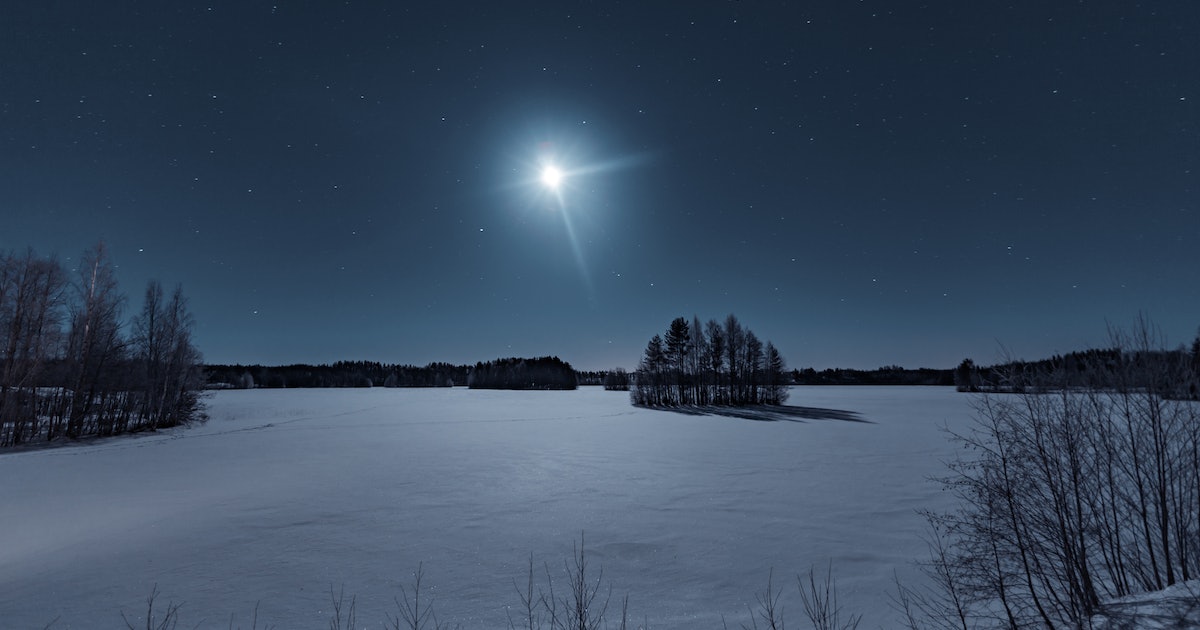
You Need to See February’s Bright Full Moon This Weekend
The Moon sits bright and white in the night, waxing and drifting through the mid-winter sky — that means it’s almost time for Sunday’s Snow Moon.
The second Full Moon of the year is named the Snow Moon based on the time of year it appears — it’s pretty snowy in February, after all. The Snow Moon will be one of 13 Full Moons this year, as things line up in August just right such that it has two Full Moons (the second is often called a Blue Moon.)
When is the Snow Moon 2023?
The Snow Moon will reach its fullest at 1:29 PM Eastern on February 5, when it’s still below the horizon in the western hemisphere. But the moon will still appear full when it rises on Sunday evening. The moon will rise shortly after sunset, reach its highest point around midnight, and set just before sunrise. It will remain almost indistinguishable from full for another night, until it wanes while the days continue to grow longer as we move toward spring.
What is a Snow Moon?
In the 1930s, the Maine Farmers’ Almanac began popularizing an eclectic set of Native American names for Full Moons – although its editors freely replaced the Snow Moon with a Christian liturgical “Lenten Moon,” according to the 1937 edition. February sees the most snow on average in the United States, and the name comes from the Dakota people.
Other names the Feburary full moon has been known by include names that refer to late winter’s hardships — the Cherokee Bony Moon or Hungry Moon — or February’s arrival of bear cubs, as in the Tlingit or Ojibwe Bear Moon.
What causes a Full Moon?
As the Moon finishes a cycle in its 27 day orbit, its position in relation to Earth and the Sun causes different parts of it to be illuminated.
A New Moon, when the Moon is only a faint shadow in the sky, comes when the Moon is directly between the Sun and Earth. As the Moon voyages around the Earth, it paces through its phases until it’s exactly opposite the Sun, when the near side is fully illuminated and the Full Moon returns.
Green Winter Comet
When the Snow Moon rises, the pale green comet C/2022 E3 (ZTF) will have just passed its closest point to Earth—– about 26 million miles on February 1, after a voyage from the Oort Cloud that’s lasted 50,000 years.
C/2022 E3 (ZTF) will reach an apparent magnitude of 5, right at the edge of visibility to the naked eye – but readily visible through binoculars, if you’re in the northern hemisphere. The comet will be near Capella, close to the North Star. But the night of the Snow Moon might not be your best chance to see it – the moon, with an apparent magnitude of -13, will be millions of times brighter that night.
When is the next Full Moon?
March’s full Moon — the Worm Moon — will wriggle its way into the night sky on March 7 and will be the last full moon of winter, two weeks before the spring equinox.
The Moon sits bright and white in the night, waxing and drifting through the mid-winter sky — that means it’s almost time for Sunday’s Snow Moon. The second Full Moon of the year is named the Snow Moon based on the time of year it appears — it’s pretty snowy in February, after all. The…
The Moon sits bright and white in the night, waxing and drifting through the mid-winter sky — that means it’s almost time for Sunday’s Snow Moon. The second Full Moon of the year is named the Snow Moon based on the time of year it appears — it’s pretty snowy in February, after all. The…